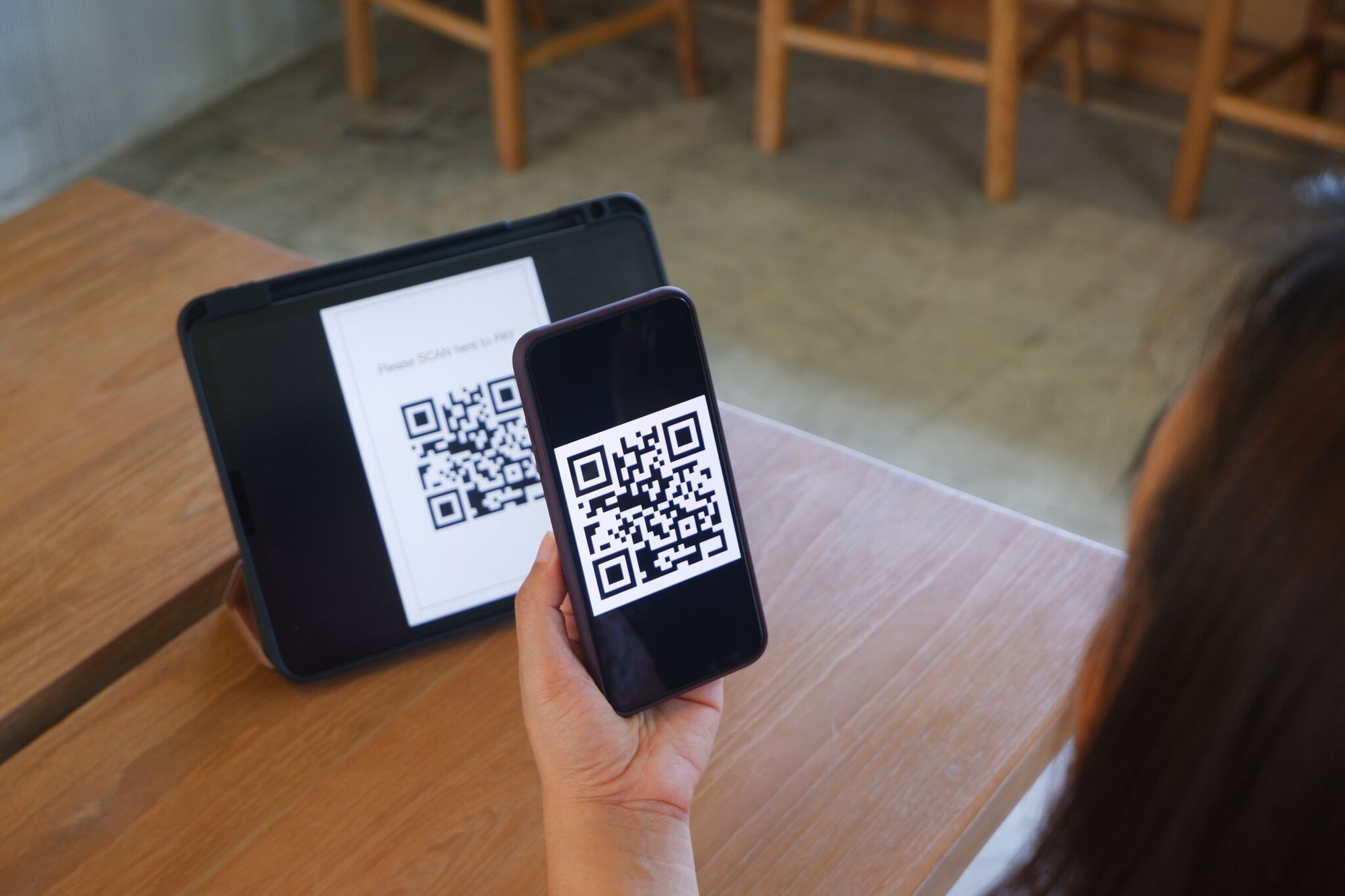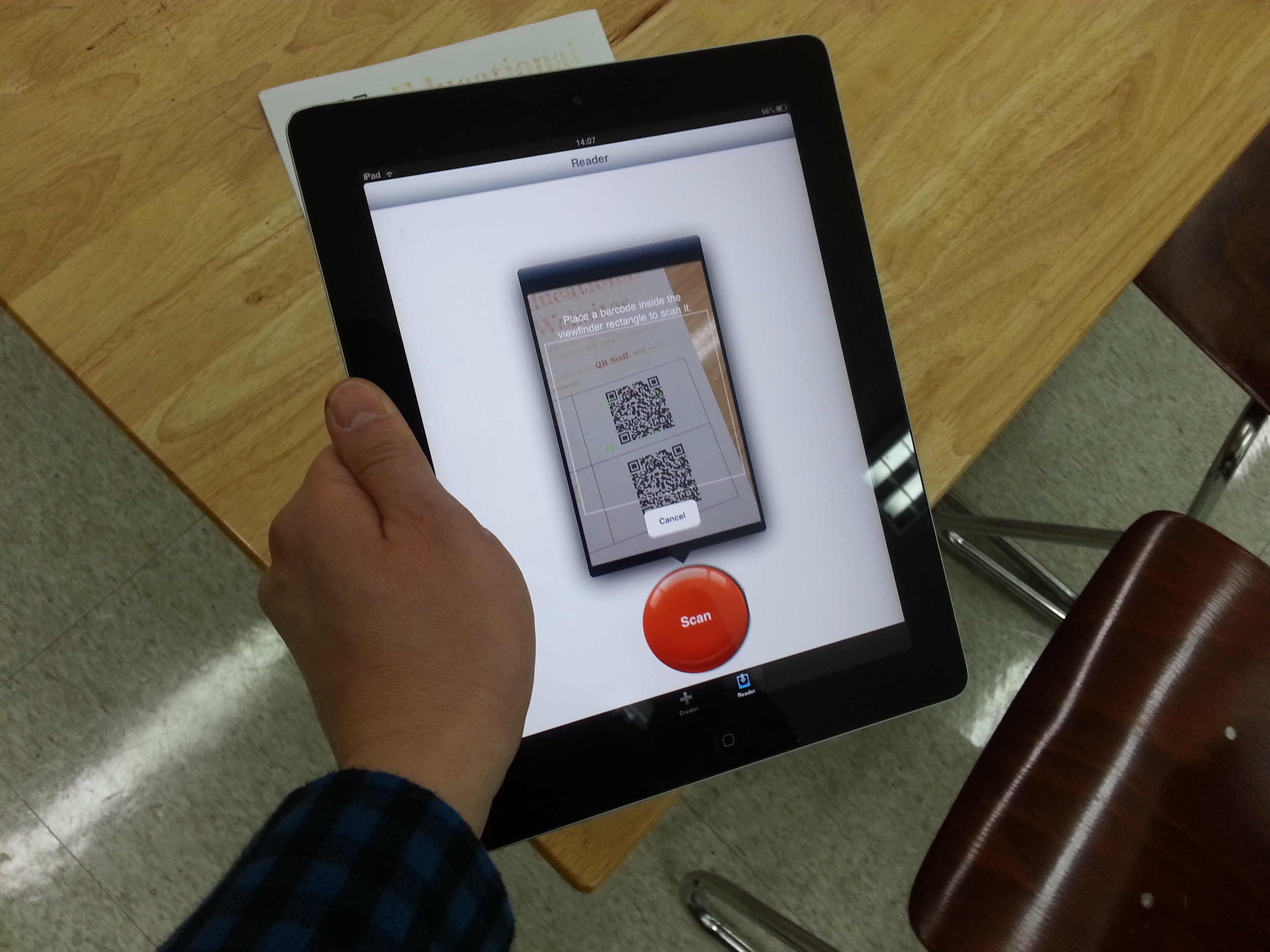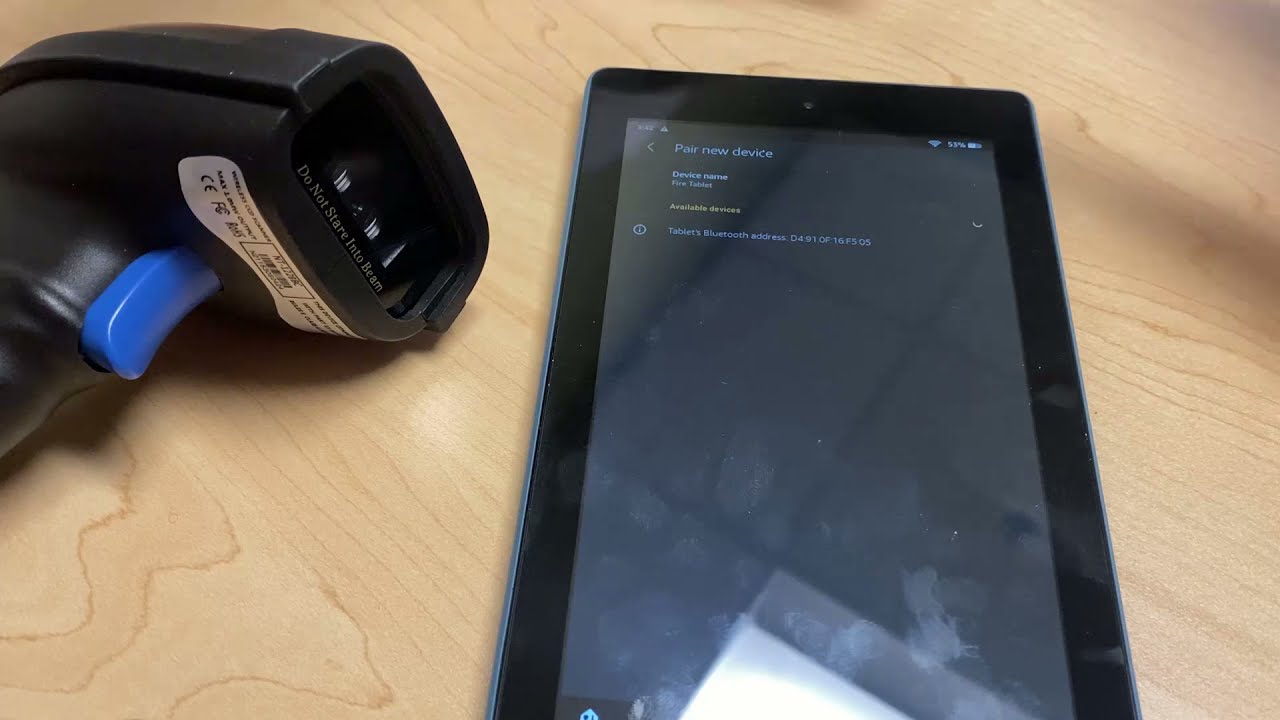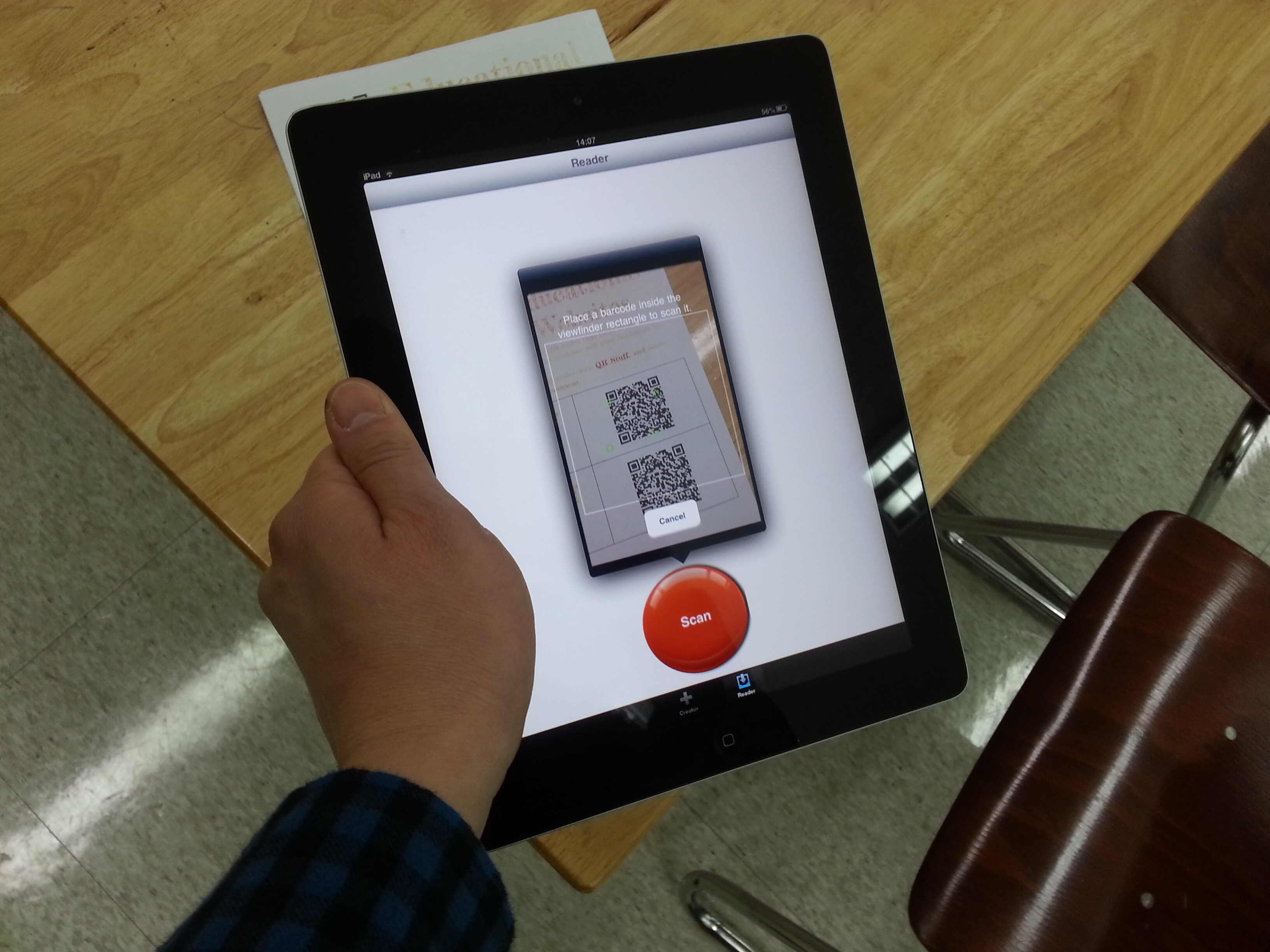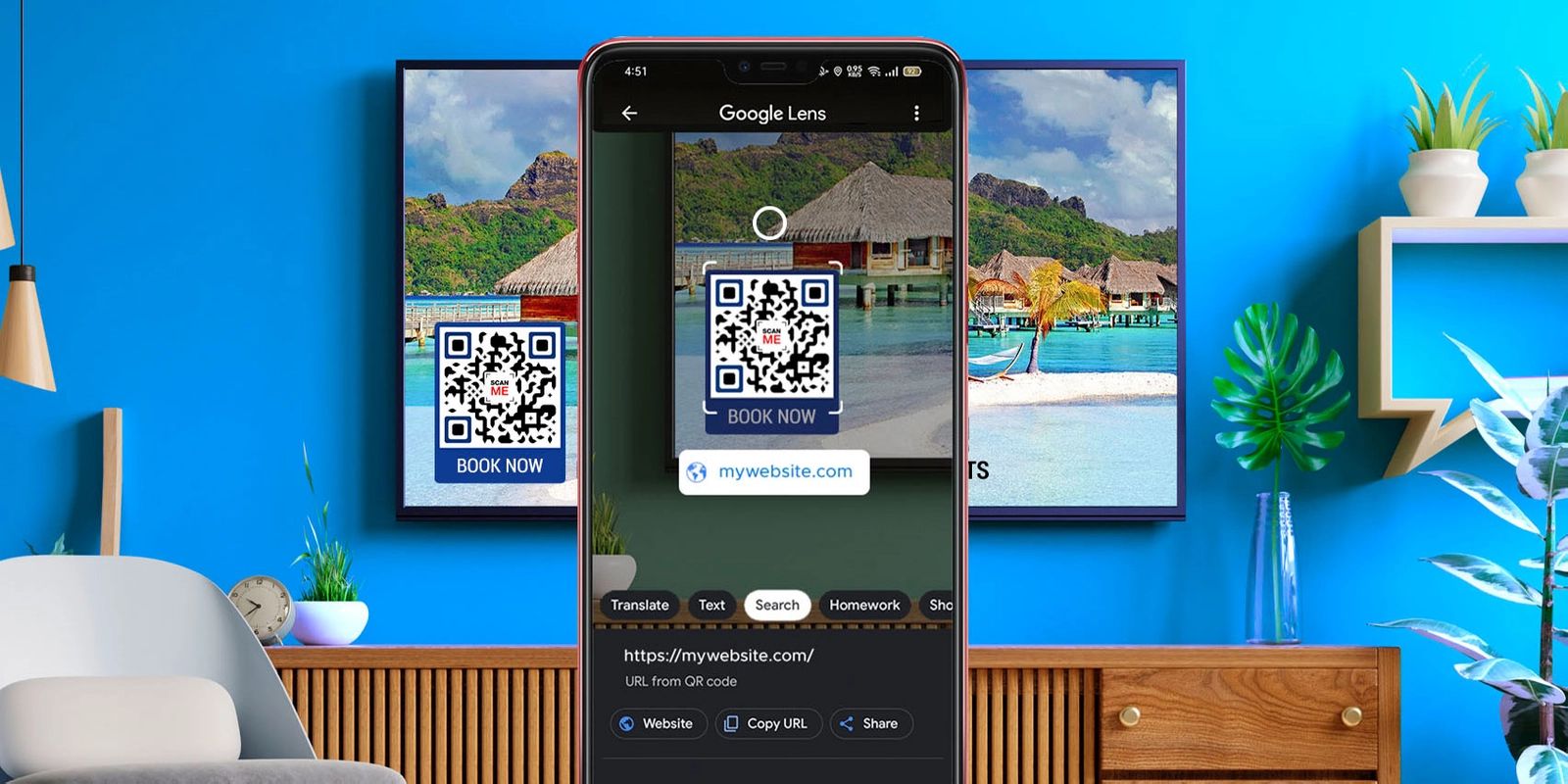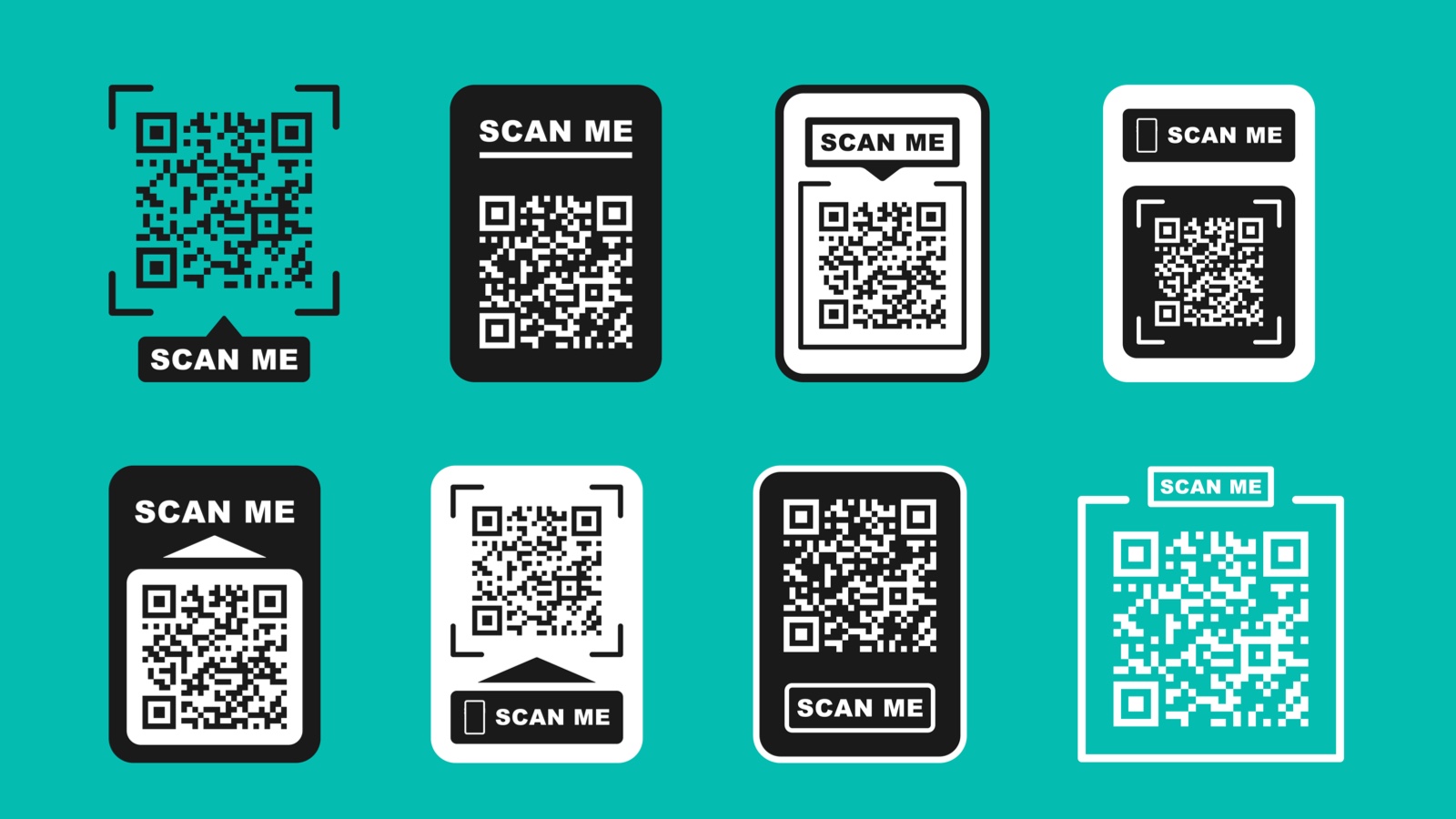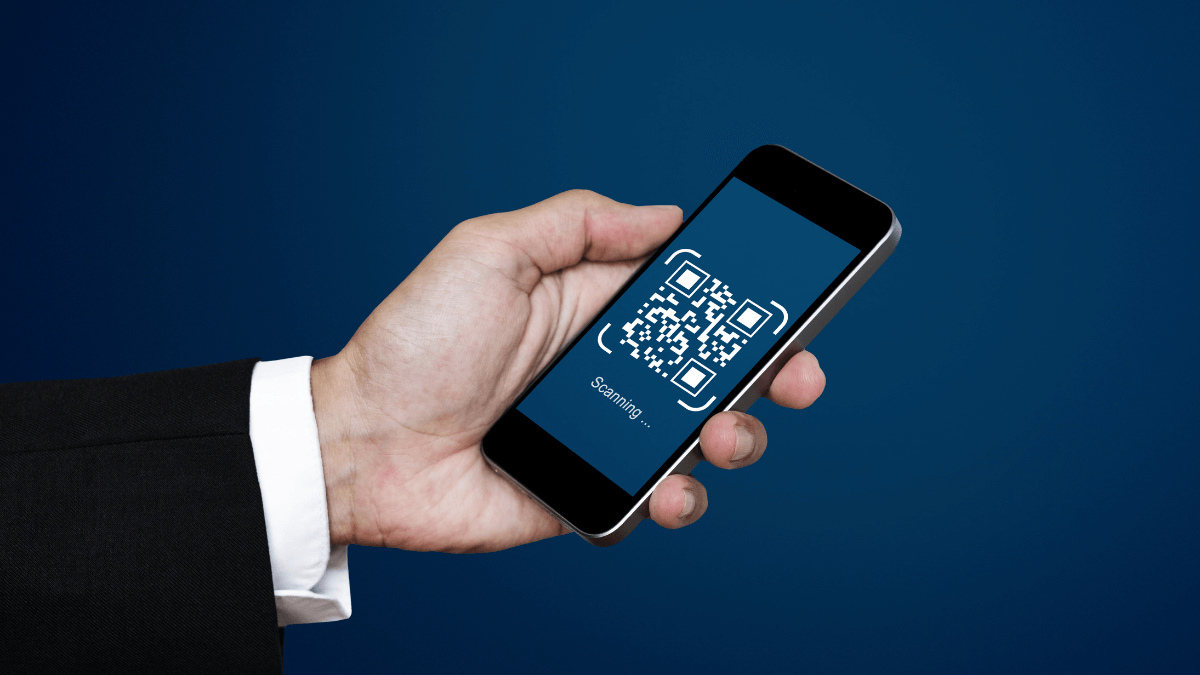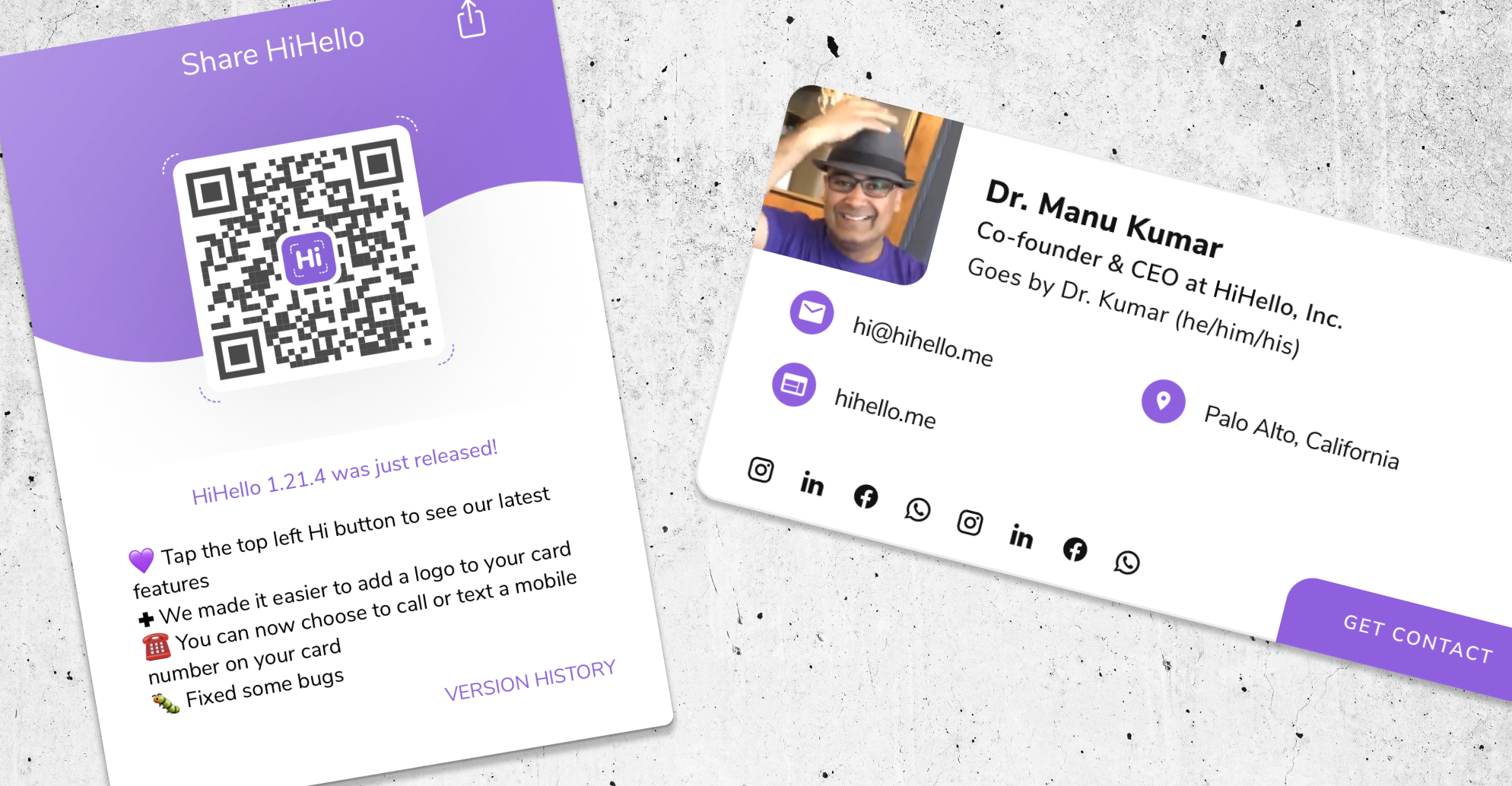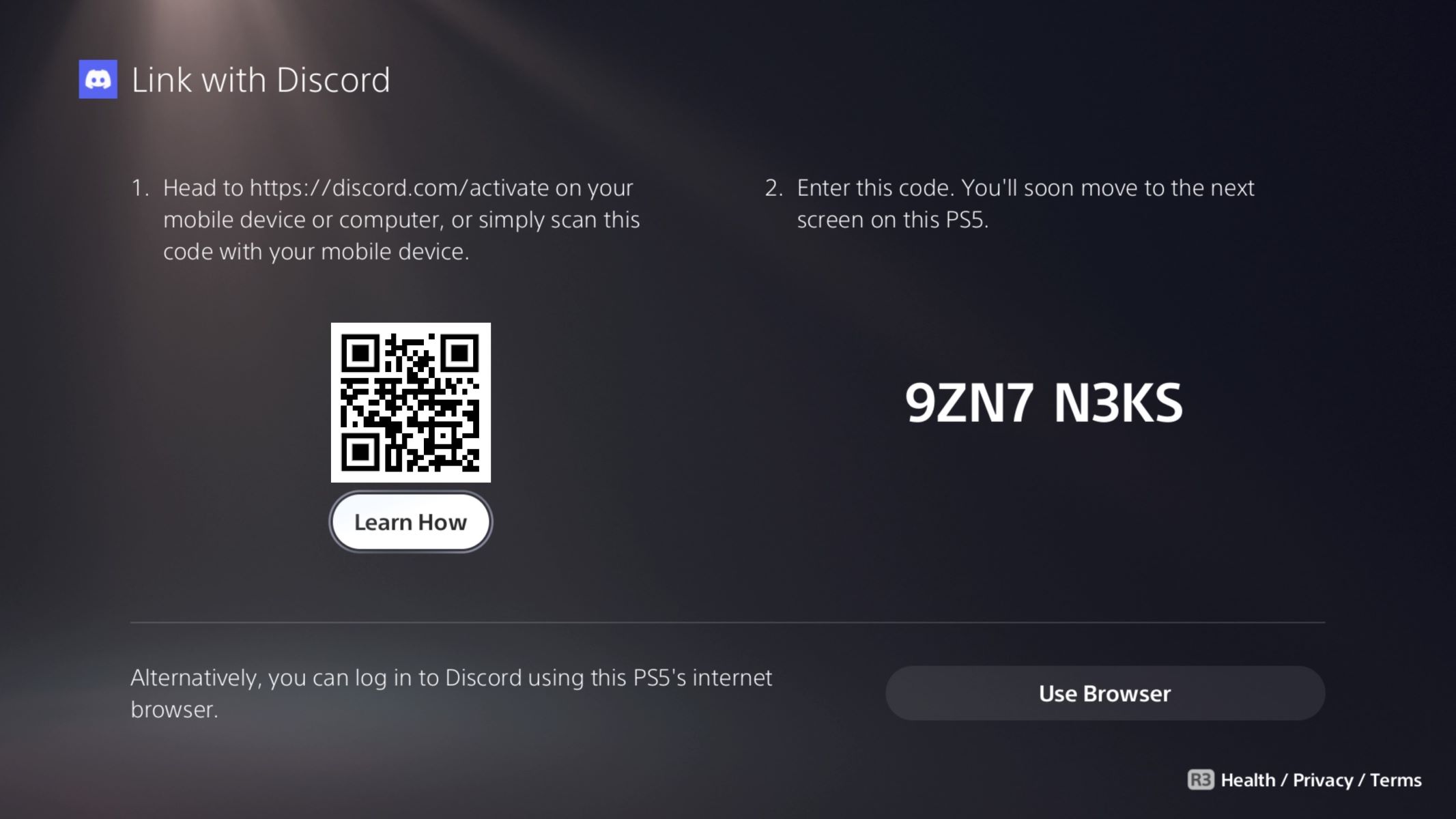Introduction
QR codes have become increasingly popular in recent years. You’ve probably seen them on product packaging, billboards, and even in advertisements. These black and white squares may seem simple, but they hide a world of information within them. QR codes, short for Quick Response codes, are two-dimensional barcodes that contain data that can be scanned and accessed by a smartphone or tablet.
In this article, we will focus on how to scan a QR code specifically on a tablet. Tablets have become a popular device for browsing the internet, consuming media, and handling day-to-day tasks. Being able to easily scan QR codes on a tablet opens up a whole lot of possibilities. Whether you’re looking to access a website, download an app, or unlock exclusive content, scanning a QR code can save you time and make your tablet experience more interactive.
There are different methods for scanning QR codes on tablets depending on the operating system that your device runs on. In the following sections, we will provide step-by-step instructions for scanning QR codes on Android tablets and iOS tablets respectively. By following these simple steps, you’ll be able to unlock the power of QR codes and make the most out of your tablet.
What is a QR Code?
A QR code, or Quick Response code, is a two-dimensional barcode that contains data that can be scanned and read by a smartphone or tablet. It was first created in Japan in 1994 for the automotive industry but has since gained widespread popularity due to its versatility.
Unlike traditional barcodes, which are one-dimensional, QR codes can store much more information. They can hold a wide range of data types, including text, URLs, contact information, calendar events, and more. This makes QR codes incredibly useful for sharing and accessing information quickly.
The structure of a QR code consists of a pattern of black and white squares arranged on a square grid. These squares represent binary data, which is then translated into readable information by a QR code scanning app or the built-in camera of a smartphone or tablet.
QR codes can be found in various places, including product packaging, business cards, posters, and advertisements. They provide a convenient way to bridge the gap between physical and digital worlds, allowing users to easily access online content or perform actions with just a simple scan.
QR codes have become a valuable tool for businesses and marketers, as they can be used to direct users to websites, display promotional offers, provide additional information about products, and even track the effectiveness of marketing campaigns.
Overall, QR codes offer a convenient and efficient way to share and access information in a digital world. They have gained widespread adoption and are now a common sight in our daily lives. With the ability to store a wide range of data types, QR codes provide endless possibilities for connecting physical objects with digital content.
Why would you want to scan a QR Code on a tablet?
Scanning QR codes on a tablet can offer numerous benefits and enhance your digital experience in various ways. Here are some of the reasons why you would want to scan a QR code on a tablet:
- Convenience: Tablets provide a larger screen size compared to smartphones, making it easier to scan and view QR codes. The increased screen real estate allows for a more comfortable and immersive scanning experience.
- Efficiency: Scanning QR codes can save you time by eliminating the need to manually enter information. Whether it’s a website URL, contact details, or event details, scanning a QR code on a tablet allows you to quickly access the information without any hassle.
- Interactive Content: QR codes often lead to interactive content such as videos, augmented reality experiences, surveys, and more. By scanning a QR code on a tablet, you can fully enjoy and engage with the interactive content, taking advantage of the tablet’s larger screen and enhanced multimedia capabilities.
- Product Information and Reviews: Many products now come with QR codes that provide additional information, user reviews, or even discount offers. By scanning these codes on a tablet, you can easily access detailed product information and make informed purchasing decisions.
- Marketing and Promotions: QR codes are frequently used in marketing campaigns to offer exclusive deals, discounts, or special content. By scanning a QR code on a tablet, you can take advantage of these promotions and enhance your shopping or entertainment experience.
- Event Participation: QR codes are commonly used for event registration and ticketing. By scanning a QR code on a tablet, you can check-in to events, access digital tickets, and unlock other event-related features and perks.
These are just a few examples of why you would want to scan a QR code on a tablet. The convenience, efficiency, interactivity, and access to additional information and promotions provided by scanning QR codes make it a beneficial and worthwhile experience for tablet users.
How to scan a QR Code on an Android tablet
Scanning a QR code on an Android tablet is a straightforward process that can be done using the device’s built-in camera. Here are the step-by-step instructions:
- Step 1: Open the camera app: Locate and open the camera app on your Android tablet. It is typically found on the home screen or in the app drawer.
- Step 2: Find the QR code: Position your tablet’s camera so that the QR code is within the frame. Make sure the QR code is well lit and clearly visible.
- Step 3: Capture the QR code using the camera: Once the QR code is in the frame, the camera will automatically focus on it. Ensure that the QR code is fully captured within the camera’s viewfinder.
- Step 4: Wait for the QR code to be recognized: The camera app will analyze the QR code, and once it recognizes it, it will display a notification or provide a preview of the scanned content.
- Step 5: Follow the QR code action or open the link: After the QR code has been recognized, you can tap on the notification or on the preview to perform the action associated with the QR code. This could be opening a website, downloading an app, or accessing content.
It’s important to note that some Android devices may require a QR code scanning app to be downloaded from the Google Play Store. In such cases, follow the instructions provided with the app on how to scan a QR code using their specific scanning functionality. Additionally, ensure that you have a stable internet connection to fully utilize the features associated with the scanned QR code.
By following these simple steps, you can quickly and easily scan QR codes on your Android tablet. Whether you’re looking to access a website, download an app, or unlock exclusive content, scanning QR codes on your Android tablet can greatly enhance your digital experience.
Step 1: Open the camera app
The first step in scanning a QR code on an Android tablet is to open the camera app. The location of the camera app may vary slightly depending on your tablet’s brand and model, but it is typically found on the home screen or in the app drawer.
To open the camera app, locate the camera icon on your tablet’s screen. It is usually represented by a small camera icon and may be labeled as “Camera.” Once you’ve located the icon, simply tap on it to launch the camera app.
If you’re unable to find the camera app on your tablet’s home screen or app drawer, you can try using the search function. Swipe down on the home screen to access the search bar, and type in “camera.” This should display the camera app as one of the search results. Tap on it to open the camera app.
Once the camera app is open, you’ll see a live view from the tablet’s camera. By default, the camera mode is set to the rear camera, which is generally used for taking photos and videos. However, for scanning QR codes, you’ll need to switch to the front-facing camera.
To switch to the front-facing camera, look for a small camera icon or an icon with two arrows in a circular pattern. Tap on this icon to switch to the front-facing camera mode. Now, you’re ready to scan the QR code.
It’s important to note that the camera app may have additional features and settings that you can explore. These features can enhance your photography experience, but for scanning QR codes, you won’t need to modify any settings or use any advanced features. Simply ensure that the camera is in focus and ready to capture the QR code.
Once the camera app is open and set to the front-facing mode, you’re ready to proceed to the next step and find the QR code you wish to scan.
Step 2: Find the QR code
After opening the camera app on your Android tablet and switching to the front-facing camera mode, the next step is to find the QR code that you want to scan. QR codes can be found in a variety of places, such as product packaging, advertisements, posters, or even on digital screens.
Look for the QR code in the area around you. It may be displayed on a physical object or on a digital screen. Make sure that the QR code is within the camera’s field of view and that it is well-lit and clearly visible.
When searching for the QR code, try to position your tablet at a comfortable angle and distance. It’s important to ensure that the camera is able to capture the entire QR code within its frame. Align your tablet so that the QR code is centered and not obstructed by any objects or reflections.
QR codes are typically square or rectangular in shape and consist of a pattern of black and white squares. They may contain additional logos or graphics related to the content they represent. Look for this distinct pattern to identify the QR code.
Take your time to locate the QR code and ensure that it is in focus and clearly visible through the camera’s viewfinder. If the QR code is small or located in a crowded environment, you can try zooming in on it by pinching the screen or using the volume buttons on your tablet.
Remember, the camera app may have an autofocus feature that will automatically adjust the focus once a QR code is detected. However, if you’re having difficulty focusing on the QR code, you can tap on the screen to manually adjust the focus or improve the lighting conditions by moving to a brighter area.
Once you have located the QR code and ensured that it is clearly visible within the camera’s frame, you’re ready to move on to the next step and capture the QR code using the tablet’s camera.
Step 3: Capture the QR code using the camera
After finding the QR code on your Android tablet’s camera app, the next step is to capture the QR code using the tablet’s camera. Capturing the QR code will allow the scanning process to begin, and the tablet will start analyzing the code to extract the encoded information.
Ensure that the QR code is fully captured within the camera’s frame before proceeding. Position your tablet at a comfortable angle and distance, aligning the QR code in the center of the camera’s viewfinder. Make sure that there are no obstructions or reflections that may interfere with capturing the QR code accurately.
Once the QR code is fully visible within the camera’s frame, the camera app will attempt to focus on it automatically. The focus adjustment ensures that the QR code is captured clearly and without any blurriness.
Most camera apps have an autofocus feature that allows the camera to automatically focus on the QR code. However, if the camera is having trouble focusing, you can tap on the screen where the QR code is located to manually adjust the focus.
Take your time to ensure that the QR code is captured with the best possible quality. A sharp and clear capture will increase the accuracy and speed of the QR code scanning process.
It’s important to note that your tablet’s camera may have built-in features to enhance the capture, such as enabling flash in low-light situations or using different capture modes. However, for scanning QR codes, these features are not typically necessary and can be left in their default state.
Once you are satisfied with the QR code’s capture and the camera has focused on it properly, you’re ready for the next step: waiting for the QR code to be recognized by the camera app.
Proceed to the following step for instructions on what to do after capturing the QR code on your Android tablet.
Step 4: Wait for the QR code to be recognized
After capturing the QR code using the camera on your Android tablet, the next step is to wait for the QR code to be recognized by the camera app. The recognition process may vary depending on the scanning app you are using, but most camera apps will automatically analyze the QR code and extract the encoded information.
During this step, the camera app will work in the background to decipher the QR code and determine the appropriate action or information associated with it. The process is usually quick and seamless, taking only a few seconds to complete.
While the QR code is being recognized, it’s important to hold your tablet steady and avoid moving it unnecessarily. Any sudden movements or shaking may hinder the camera’s ability to accurately recognize the QR code.
You may notice that the camera app provides a visual indication that it is processing the QR code. This can be in the form of a loading icon, progress bar, or a notification that a QR code has been detected.
It’s important to remain patient during this step and not interrupt the process. Allow the camera app enough time to analyze and decode the QR code. Depending on the complexity of the QR code and the processing power of your tablet, the recognition process may take a bit longer in some cases.
If the camera app is unable to recognize the QR code or is taking an unusually long time, you may need to reposition your tablet and recapture the QR code. Ensure that the QR code is clear, properly lit, and fully captured within the camera’s viewfinder.
Once the QR code has been successfully recognized, you are ready to move on to the final step: following the QR code action or opening the associated link.
Continue reading to learn what to do after the QR code has been recognized on your Android tablet.
Step 5: Follow the QR code action or open the link
After the QR code on your Android tablet has been recognized by the camera app, the final step is to follow the QR code action or open the associated link. The action or link embedded within the QR code will vary depending on the purpose of the code and what it is intended to achieve.
Once the QR code has been recognized, the camera app may display a notification or provide a preview of the scanned content. Tap on the notification or on the preview to proceed with the action associated with the QR code.
Common actions triggered by scanning a QR code include:
- Opening a website: Tapping on the notification or preview will automatically open the web browser on your Android tablet, directing you to the associated website encoded within the QR code.
- Downloading an app or file: The QR code might lead you to a page where you can download a specific app or file that is related to the QR code’s purpose.
- Showcasing exclusive content: Scanning a QR code may unlock access to exclusive videos, articles, discounts, or other content that is not readily available to the general public.
- Providing contact information: In some cases, scanning a QR code may instantly add a contact to your tablet’s address book, saving you the hassle of manually entering the information.
Regardless of the action or link associated with the QR code, it’s important to ensure that you have a stable internet connection. This will enable you to fully utilize the features and functionalities provided by the scanned QR code.
Follow the on-screen instructions or prompts that may appear after tapping on the notification or preview. These instructions will guide you further on how to complete the intended action or access the information encoded within the QR code.
Once you have completed the desired action or accessed the relevant information, you can continue using your tablet as usual or return to the camera app to scan more QR codes if desired.
By following these five steps, you can successfully scan and extract information from a QR code using your Android tablet.
How to scan a QR Code on an iOS tablet
Scanning a QR code on an iOS tablet, such as an iPad or an iPhone, is a straightforward process that can be done using the device’s built-in camera or a dedicated QR code scanning app. Here are the step-by-step instructions:
- Step 1: Open the camera app or the QR Code scanning app: On your iOS tablet, locate and open either the camera app or a QR code scanning app. The camera app is typically found on the home screen or in the app drawer. If you’re using a dedicated QR code scanning app, make sure it is installed on your device and accessible.
- Step 2: Position the QR Code within the viewfinder: Hold your iOS tablet steady and position the QR code within the camera’s viewfinder. Ensure that the QR code is well-lit and clearly visible, allowing the camera to capture it effectively.
- Step 3: Wait for the QR Code to be recognized: If you’re using the camera app on your iOS tablet, the camera will automatically recognize the QR code and display a notification or a pop-up preview of the recognized content. If you’re using a QR code scanning app, follow the app’s instructions on how to proceed after scanning the QR code.
- Step 4: Follow the QR Code action or open the link: After the QR code has been recognized, tap on the notification or the preview provided by the camera app or the QR code scanning app. This will allow you to perform the action associated with the QR code, such as opening a website, downloading an app, or accessing exclusive content.
If you’re using the camera app on your iOS tablet, it’s important to note that some older devices or devices with limited capabilities may not have QR code scanning functionality built-in. In such cases, you can download a dedicated QR code scanning app from the App Store to scan QR codes.
Ensure that your iOS tablet has a stable internet connection to fully utilize the features associated with the scanned QR code, such as accessing online content or downloading apps.
By following these simple steps, you can easily scan QR codes on your iOS tablet and take advantage of the convenience and interactivity they offer.
Step 1: Open the camera app or the QR Code scanning app
When it comes to scanning a QR code on an iOS tablet, you have two options: you can either use the built-in camera app or a dedicated QR code scanning app. Both options are quick and easy to use. Here’s how you can get started:
- Option 1: Open the camera app: On your iOS tablet, locate and tap on the camera app icon. Typically, the camera app can be found on the home screen or in your app drawer. Opening the camera app will provide you with access to the device’s camera functionality.
- Option 2: Open a QR code scanning app: If your device does not have a built-in QR code scanning feature or if you prefer to use a dedicated app, search for a QR code scanning app on the App Store. Once you’ve selected and installed the app of your choice, locate and tap on its icon to launch the app.
Regardless of whether you choose to use the camera app or a specific QR code scanning app, it’s important to know that both methods are effective for scanning QR codes on an iOS tablet.
If you opt to use the camera app, it will automatically activate the built-in QR code scanning functionality as soon as the camera is launched, allowing you to scan QR codes directly.
If you decide to use a dedicated QR code scanning app, open the app and familiarize yourself with its features and layout. Depending on the app you choose, it may offer additional functionalities, such as history tracking or the ability to generate QR codes.
No matter which option you choose, ensure that you grant the necessary permissions for the app to access your tablet’s camera. This will allow the app to capture and analyze QR codes efficiently.
With the camera app or QR code scanning app open and ready to go, you’re now prepared to move on to the next step: positioning the QR code within the viewfinder.
Step 2: Position the QR Code within the viewfinder
After opening the camera app or a QR code scanning app on your iOS tablet, the next step is to position the QR code within the viewfinder of your device’s camera. This step is crucial for capturing the QR code accurately and efficiently. Here’s how to position the QR code:
- Hold your iOS tablet steady: Ensure that you have a firm grip on your tablet and hold it steady. This will prevent any unwanted camera shake that could result in a blurry or unreadable QR code capture. Find a comfortable and stable position to hold your tablet throughout the process.
- Align the QR code within the viewfinder: Position the QR code within the camera’s viewfinder, making sure it is clearly visible. Try to center the QR code in the frame, leaving some space around it for better focus and clarity. It’s important to capture the entire QR code within the viewfinder to ensure accurate scanning.
- Ensure proper lighting: Adequate lighting plays a crucial role in successfully scanning a QR code. Ensure that the QR code is well-lit, as this will improve the camera’s ability to recognize and capture the code effectively. Avoid strong backlighting or shadows that may obscure the QR code.
- Adjust the distance, if necessary: Depending on the size of the QR code, you may need to adjust the distance between your tablet and the code to achieve the best results. Experiment with smaller or larger distances to find the optimal distance where the QR code is clear and easy to read within the camera’s viewfinder.
As you align the QR code within the viewfinder, you may notice that the camera app or QR code scanning app provides guidance, such as lines or markers, to help you position the QR code accurately. Utilize these tools if available to ensure that the QR code is aligned properly.
Remember to take your time when positioning the QR code within the viewfinder and ensure that it is well-focused and clearly visible. A well-captured QR code will significantly enhance the scanning process and provide optimal results.
Once the QR code is properly positioned within the viewfinder, you’re ready to move on to the next step and initiate the scanning process.
Step 3: Wait for the QR Code to be recognized
After positioning the QR code within the viewfinder of your iOS tablet’s camera app or QR code scanning app, the next step is to wait for the QR code to be recognized. During this step, the app will analyze the QR code and extract the encoded information. Here’s what you need to do:
Once the QR code is within the viewfinder and clearly visible, the camera app or QR code scanning app will automatically initiate the recognition process. The app will use various algorithms to scan the QR code and decipher its contents.
Be patient during this step as the scanning process may take a few moments. This duration can vary depending on factors such as the complexity of the QR code, the processing power of your iOS tablet, and the lighting conditions.
Keep your iOS tablet steady and avoid any sudden movements that may affect the scanning process. It’s crucial to maintain a stable position to ensure the camera app or QR code scanning app can accurately analyze the QR code and extract the data.
As the scanning process takes place, you may notice indicators on the screen, such as a loading animation or progress bar, indicating that the app is actively recognizing the QR code. These visual cues provide feedback on the progress of the recognition process.
If the scanning app is unable to recognize the QR code or if it takes longer than expected, consider adjusting the position and lighting conditions. Reposition your tablet to capture the QR code from a different angle and ensure that it is well-lit and clearly visible.
Once the app successfully recognizes the QR code, it will proceed to the next step, which is either displaying the scanned content or providing options for action based on the QR code’s purpose.
Now that you’ve patiently waited for the QR code to be recognized, it’s time to move on to the final step: following the QR code action or opening the associated link.
Step 4: Follow the QR Code action or open the link
After the QR code on your iOS tablet has been successfully recognized by the camera app or QR code scanning app, the final step is to follow the action associated with the QR code or open the link embedded within it. The action or link will depend on the purpose of the QR code and what it is designed to achieve. Here’s what you need to do:
If the camera app or QR code scanning app detects a recognized QR code, it will typically display a notification or preview of the scanned content. Tap on the notification or preview to proceed with the action associated with the QR code.
Common actions triggered by scanning a QR code on an iOS tablet include:
- Opening a website: Tapping on the notification or preview will automatically launch the Safari web browser on your iOS tablet, directing you to the website associated with the QR code.
- Downloading an app or file: Scanning a QR code may redirect you to a page where you can download a specific app or file that is related to the QR code’s purpose. This could be an app from the App Store, a PDF file, or any other downloadable content.
- Accessing exclusive content: Scanning a QR code may unlock access to exclusive videos, articles, promotions, discounts, or other content that is not readily available to the general public. By following the action, you can enjoy or benefit from the hidden content or special offers.
- Adding contact information: Some QR codes contain contact details that can be instantly added to your iOS tablet’s address book. Tapping on the notification or preview can automatically import the contact’s information into your contacts.
Depending on the QR code and the actions associated with it, you may encounter additional prompts or instructions after tapping on the notification or preview. Follow these prompts to complete the desired action or access the information encoded within the QR code.
Ensure that your iOS tablet is connected to the internet for a seamless experience when following the QR code action or opening any associated links. A stable internet connection allows you to fully utilize the features and functionalities provided by the scanned QR code.
Once you’ve completed the desired action or accessed the relevant information, you can continue using your iOS tablet as usual or return to the camera app or QR code scanning app to scan more QR codes if desired.
By following these steps, you can successfully scan and interact with QR codes on your iOS tablet, enhancing your digital experience and unlocking a world of information and possibilities.
Conclusion
Scanning QR codes on tablets, whether it’s an Android or iOS device, has become an increasingly common practice in our digital age. QR codes offer a quick and convenient way to access information, websites, apps, and exclusive content with just a simple scan using your tablet’s camera app or a dedicated QR code scanning app.
We explored the step-by-step process of scanning QR codes on both Android and iOS tablets, highlighting the importance of opening the camera app or a QR code scanning app, positioning the QR code within the viewfinder, waiting for the code to be recognized, and finally, following the associated action or opening the link embedded within the QR code.
By following these steps, you can unlock a wide array of benefits. Scanning QR codes on tablets allows for a more immersive experience, thanks to the larger screen size and enhanced multimedia capabilities. It saves time by eliminating the need to manually enter information and enables seamless interaction with various types of content.
Whether you’re scanning QR codes to access websites, download apps, receive exclusive offers, or even add contact information, tablets provide a convenient platform for these interactions. The process is simple and straightforward, allowing you to explore and benefit from the numerous opportunities that QR codes present.
Remember to ensure proper lighting, steady positioning of the tablet, and a stable internet connection for optimal scanning and content access. Additionally, be mindful of any specific instructions provided by the camera app or QR code scanning app you are using.
With the ability to scan QR codes on your tablet, you can seamlessly bridge the gap between the physical and digital worlds, enhancing your browsing, shopping, and information retrieval experiences. So grab your tablet, start scanning, and unlock the possibilities that QR codes have to offer!







